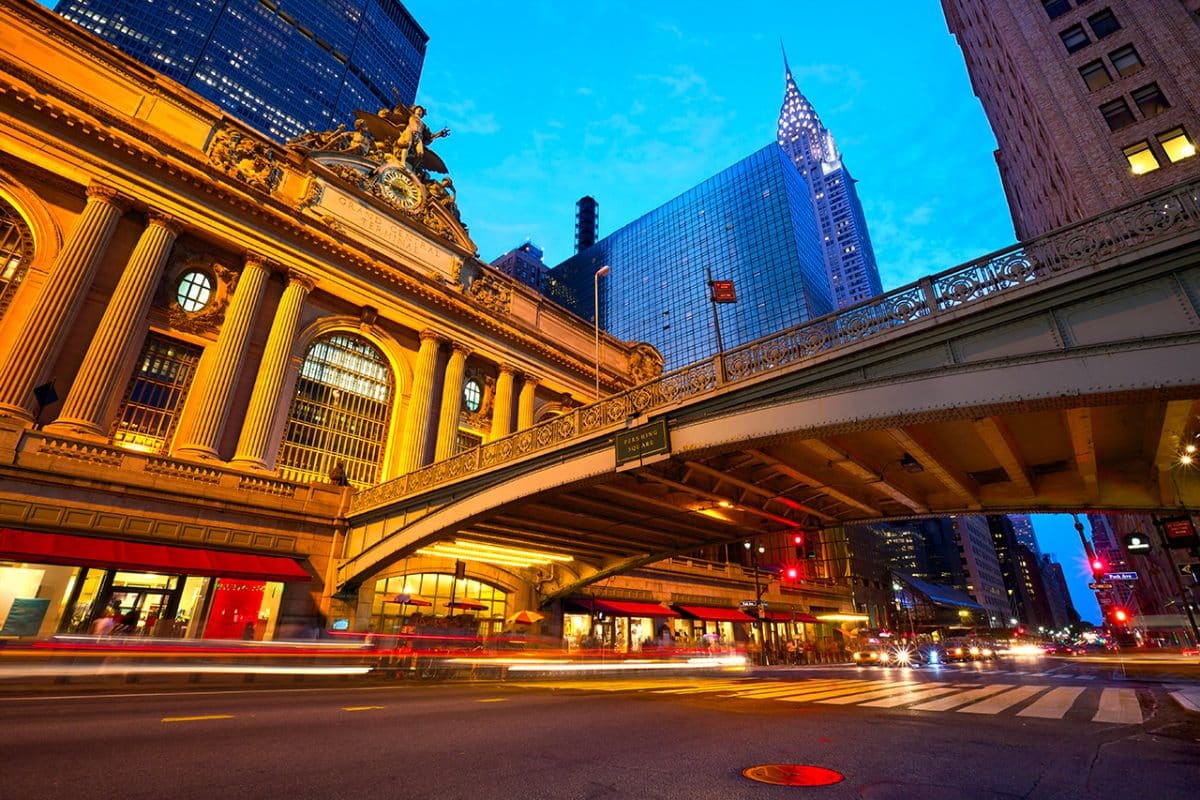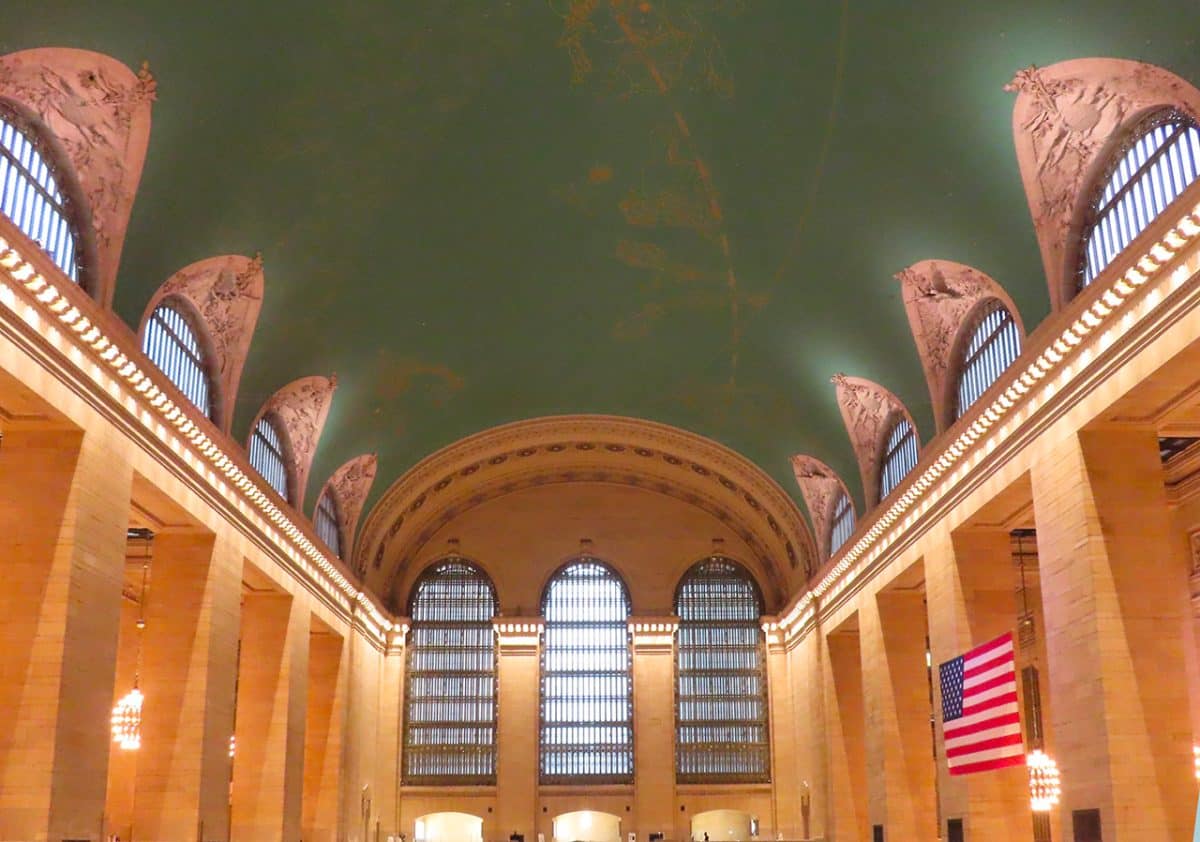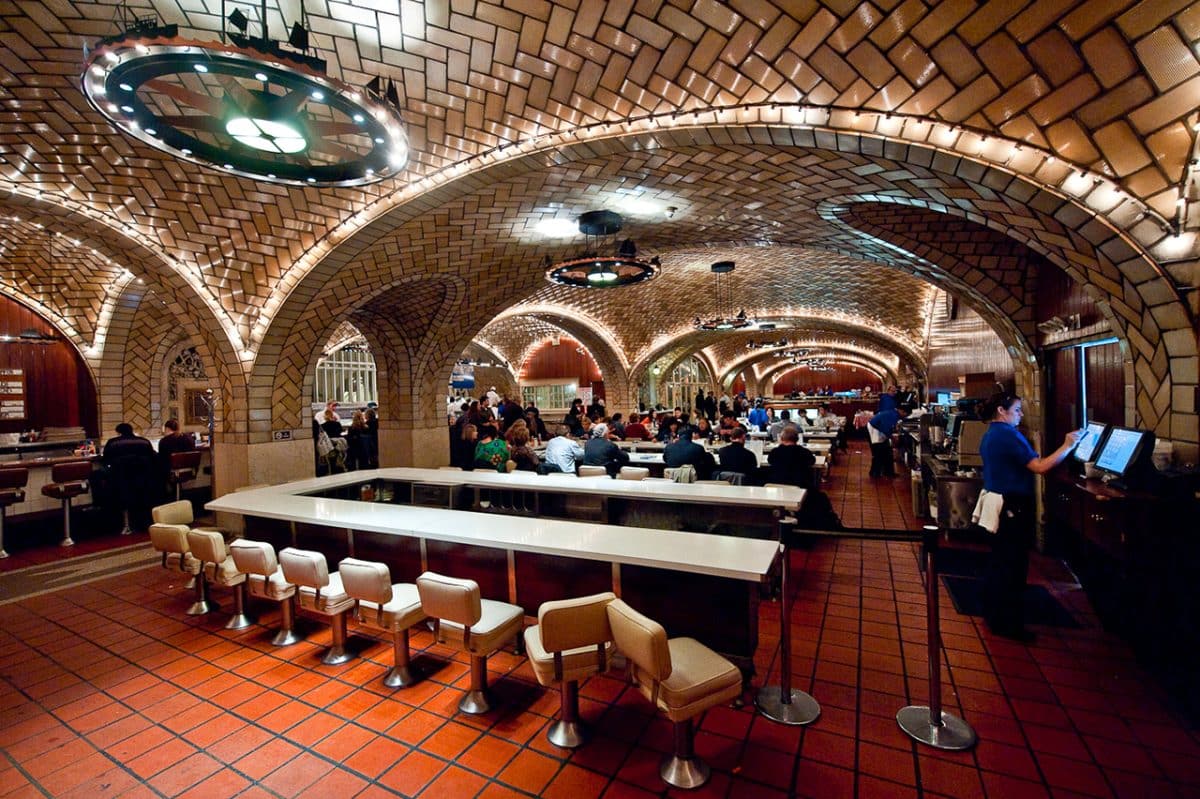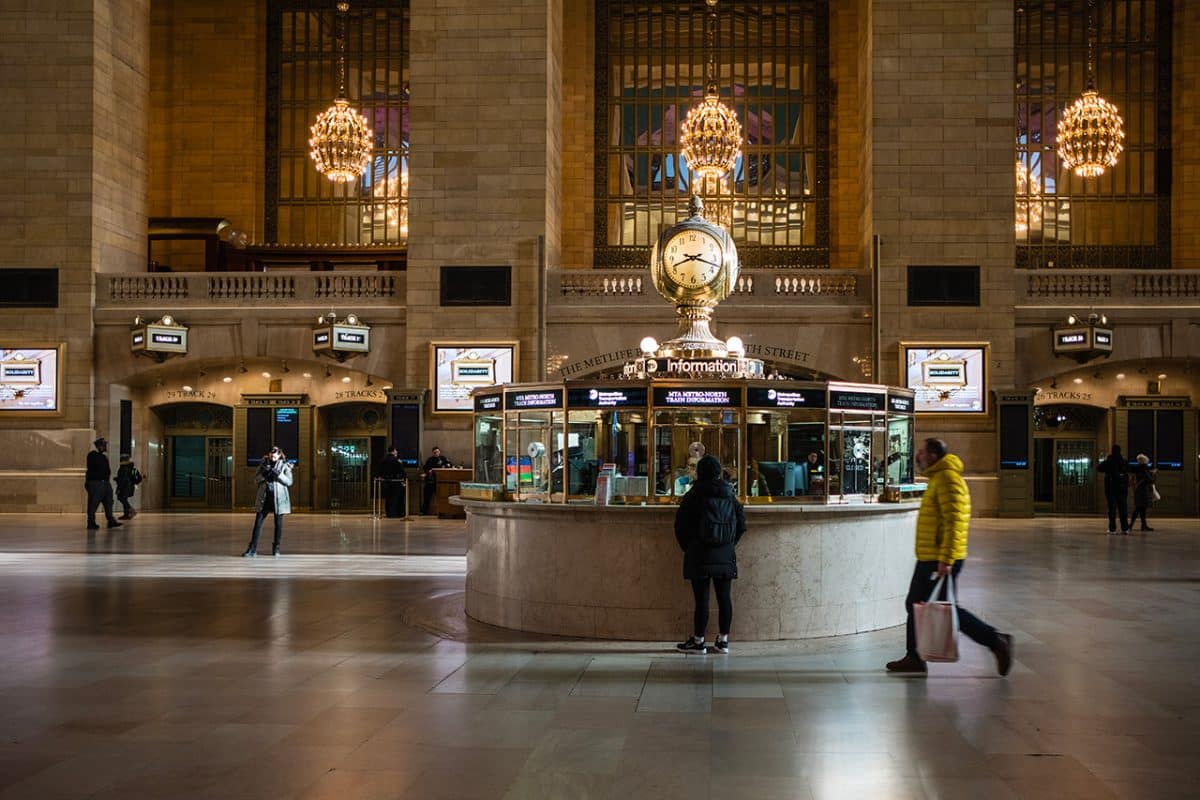Grand Central Terminal stands majestic and imposing in the heart of Manhattan. This legendary station is much more than just a railway junction – it’s a true New York landmark, a place where history, architecture and everyday life meet in a perpetual ballet.
The beating soul of Manhattan
An architectural monument in the heart of Midtown
When you arrive at 89 East 42nd Street, the building takes you by surprise . The main façade on Park Avenue creates a spectacular break in the line of skyscrapers. Right next to it stands the Chrysler Building, forming an architectural duo with the station that defines the skyline of Midtown Manhattan.
The station is open almost non-stop, opening its doors from 5.30am to 2am. Getting there couldn’t be easier – Grand Central-42nd Street station takes you directly to the station, at the junction of several underground lines.

A history full of twists and turns
The history of this legendary station began in 1871 with the Grand Central Depot. Faced with growing crowds, a first transformation gave birth to Grand Central Station in 1900. But it was a tragic event that precipitated its final metamorphosis: a train accident in 1902 claimed the lives of 15 people.
Between 1903 and 1913, a colossal construction project radically transformed the infrastructure to create the station we know today. The name Grand Central Terminal was adopted, although many New Yorkers still use “Station” in their everyday language.
In 1976, the station was granted National Historic Landmark status, recognising its role in American heritage. This recognition crowned years of struggle to preserve the station in the face of threats of demolition.
The Main Concourse: a permanent spectacle
As you pass through the main gates, you enter the Main Concourse, a breathtaking space. This monumental hall represents the very essence of Grand Central. The natural light filtering through the huge arched windows creates an almost sacred atmosphere.
The eye naturally wanders to the ceiling, a true masterpiece created by artist Paul Helleu in 1912. This celestial vault reproduces the constellations visible from the Mediterranean in winter, with no fewer than 2,500 stars, 59 of which shine thanks to LEDs.
In the middle of the hall sits the emblematic four-dial clock on the information kiosk. It’s not just a timepiece – it’s the meeting place par excellence for New Yorkers. What’s it worth? One auction house estimated it at 10 million dollars.

Numbers that make you dizzy
Grand Central’ s statistics are impressive: 44 platforms served by 67 train tracks, spread over two underground levels. Every day, almost 750,000 people pass through its halls and corridors, making it one of the busiest stations in the world.
The building itself covers a considerable area, stretching over several city blocks. The materials used in its construction reflect a commitment to excellence: Tennessee marble for the floors,Indiana limestone for the walls, bronze and crystal for the light fittings.
A clever detail: all the departure times displayed on the signs are one minute ahead! This little ruse gives late travellers extra time, a very New York touch.
The station’s hidden treasures
The Whispering Gallery, located near the Dining Concourse, offers a fascinating acoustic experience. Stand in one corner of this vaulted gallery, whisper against the wall – and as if by magic, your voice crosses the space to be perfectly audible in the opposite corner.
Few visitors know that Grand Central houses a tennis court on its upper floors. Although not accessible to the general public, its existence testifies to the surprising versatility of the place.
Beneath the station lies the mysterious platform 61, nicknamed “the station of the presidents”. This private platform was a direct link to theWaldorf-Astoria Hotel, allowing celebrities such as President Franklin D. Roosevelt to pass through discreetly.
A small hole in the ceiling of the Main Concourse is a reminder of the time when a Redstone missile was displayed at the height of the Cold War in 1957. This opening was used to stabilise the missile by means of a cable – an unusual relic from another era.

A gastronomic destination
The Dining Concourse, located beneath the main concourse, is a culinary paradise. One of the must-visit restaurants, Junior’s, has earned a solid reputation for its delicious cheesecakes – to be enjoyed on the premises or taken away as a gourmet souvenir.
For a more refined atmosphere, The Campbell Apartment takes you back to the Roaring Twenties. Once the private office of tycoon John W. Campbell, this bar has retained its original decor with dark wood panelling and an imposing fireplace.
Don’t miss the Grand Central Oyster Bar, a century-old institution tucked away in the depths of the station. Its fresh seafood and distinctive tiled vault make it a unique venue, popular with tourists and New Yorkers alike.

Grand Central through the seasons
In winter, Vanderbilt Hall hosts an enchanting Christmas market. Local craftsmen offer their creations and gastronomic products in a festive atmosphere that contrasts magnificently with the usual bustle of the station.
In summer, free concerts are held both in the concourse and on the forecourt. From classical to jazz to rock, these musical performances add a cultural dimension to the experience.
In spring, the“Taste of Grand Central” event celebrates local gastronomy. The station’s restaurants offer special menus, often with the participation of renowned chefs.
A cultural icon
The imposing silhouette of Grand Central has left its mark on the collective imagination through the cinema. In“North by Northwest“, Alfred Hitchcock filmed Cary Grant fleeing from his pursuers. “The Avengers” transformed the main concourse into a spectacular battlefield.
Writers were not to be outdone. John Updike described the station as a “cathedral of movement”, while poet Billy Collins wrote evocative verses capturing the essence of a place where so many lives intersect.
Tips for a successful visit
To enjoy Grand Central without the crowds, opt for a mid-morning or early afternoon visit on weekdays. You’ll be able to enjoy the lively atmosphere without being overwhelmed by the rush-hour crowds.
Photography enthusiasts will find a variety of angles from which to capture this legendary venue. The starry ceiling, the central clock, the rays of light streaming through the arched windows and the constant flow of travellers all provide captivating subjects.
A guided tour in French will give you the chance to explore the building in greater depth. New York City-certified guides reveal the rich history and well-kept secrets of the station over the course of two fascinating hours.

Looking to the future
Despite its century-old age, Grand Central Terminal continues to evolve. The East Side Access project represents a major extension, connecting the station to the Long Island Rail Road network. This transformation will relieve congestion at Penn Station while providing direct access to Manhattan’ sEast Side for Long Islanders.
The station now incorporates green initiatives with energy-saving systems and optimised waste management. These modernisations testify to its ability to remain functional while preserving its historic character.
Grand Central Terminal embodies the very spirit of New York: grand, resilient and always on the move. Take the time to observe its starry ceiling, stop in front of its mythical clock and lose yourself in its corridors. You’ll experience a moment suspended in time, at the very heart of the city that never sleeps.
A word of advice before you go: look up at the ceiling of the Main Concourse and look for the astronomical error – the constellations are represented upside down! This ‘mistake’, which has never been corrected, is now part of the charm of this unique venue.


